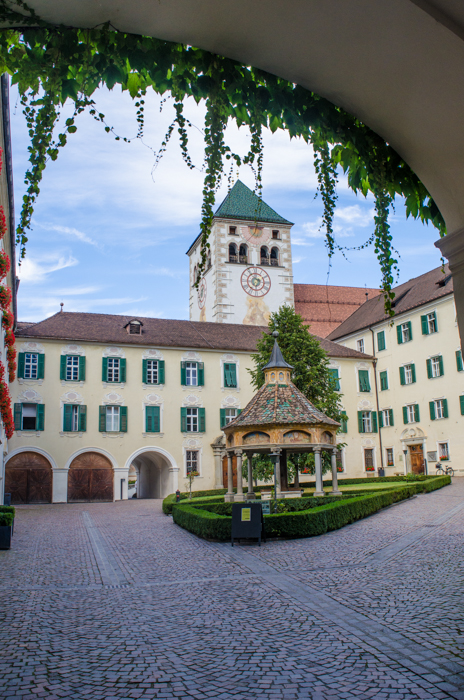 Our last stop on our upcoming Hike and Bike tour in Italy is the lovely Sudtirol town of Bressanone. Located just north of town, along the Isarco River, is the Abbazia di Novacella. The Abbazia (Abbey) was founded in 1142 by the Augustinians. In addition to addressing the spiritual and educational needs of the surrounding communities, the Abbazia also supported itself through agricultural endeavors.
Our last stop on our upcoming Hike and Bike tour in Italy is the lovely Sudtirol town of Bressanone. Located just north of town, along the Isarco River, is the Abbazia di Novacella. The Abbazia (Abbey) was founded in 1142 by the Augustinians. In addition to addressing the spiritual and educational needs of the surrounding communities, the Abbazia also supported itself through agricultural endeavors.
Throughout its 850 year history, the Abbazia played a central role in the region. The 15th and early 16th centuries were Novacella’s heyday, revealed in the magnificent altars produced for the collegiate church during this period, as well as the impressive late Gothic hall choir which embellished the church with its characteristic steep, towering roof.
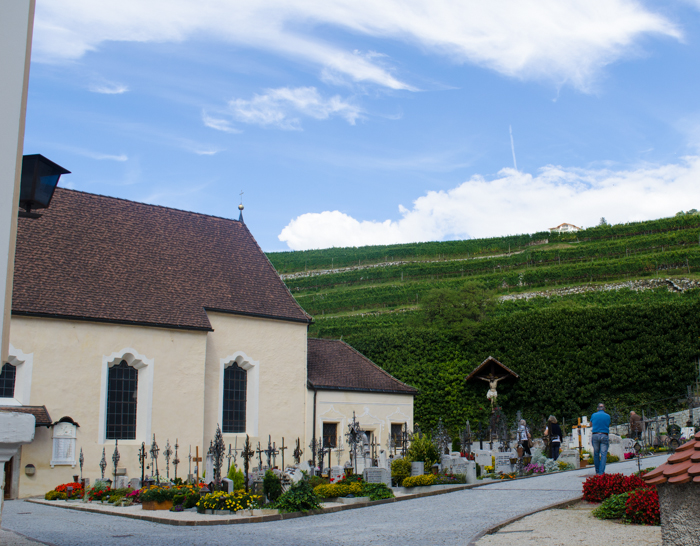 Later years saw the Abbey almost destroyed. In World War I Novacella was occupied by soldiers. Apart from the small funeral bell and the fire bell, all other bells were taken away to make weapons and were only replaced in 1922. The Second World War was even more disastrous for the Abbazia. The German Armed Forces used the monastery buildings to store armaments and set up a printing works. As a result, Novacella became the target of an Allied bombing raid on 23rd March 1945 which damaged the northern side of the collegiate church, the sacristy, the tower and the Chapel of Grace. The damage was finally repaired by restoration work in 1982.
Later years saw the Abbey almost destroyed. In World War I Novacella was occupied by soldiers. Apart from the small funeral bell and the fire bell, all other bells were taken away to make weapons and were only replaced in 1922. The Second World War was even more disastrous for the Abbazia. The German Armed Forces used the monastery buildings to store armaments and set up a printing works. As a result, Novacella became the target of an Allied bombing raid on 23rd March 1945 which damaged the northern side of the collegiate church, the sacristy, the tower and the Chapel of Grace. The damage was finally repaired by restoration work in 1982.
Today the Abbey still serves more than 20 parishes where their work involves both pastoral care as well as education. The Neustift school boarding house opened at the beginning of the 1970s to accommodate almost 100 boys. Tourism is also an important activity, and the Abbey offers guided tours of the monastery complex, and is home to The Novacella Education and Conference Centre.
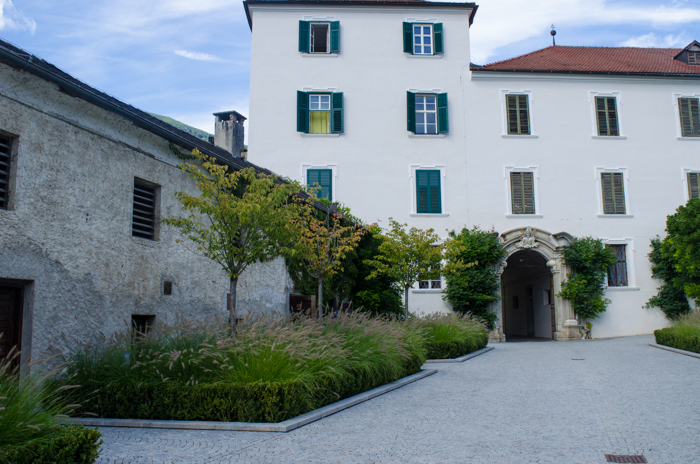 The monastery still maintains itself economically through the production and sales of agricultural products such as culinary herbs and fruit. But its most renowned product are the Abbazia di Novacella wines. The Abbazia now boasts an international reputation as an award-winning winery. It is home to a small wine making school, and in 2009, Italy’s Gambero Rosso named Celestino Lucin, the abbey’s enologist, Winemaker of the Year.
The monastery still maintains itself economically through the production and sales of agricultural products such as culinary herbs and fruit. But its most renowned product are the Abbazia di Novacella wines. The Abbazia now boasts an international reputation as an award-winning winery. It is home to a small wine making school, and in 2009, Italy’s Gambero Rosso named Celestino Lucin, the abbey’s enologist, Winemaker of the Year.
The Abbazia di Novacella is located in the Alto Adige Valle Isarco DOC. Also known as Sudtirol Eisacktaler, is Italy’s northernmost wine region on the southern side of the Alps. The mineral-rich soils, the elevation (1,970 ft – 2,950 ft) and the cool climate are all factors which produce intense aromas and flavors as well as fruity, mouth-watering acidity found in wines produced from the typical white Valle Isarco valley grape varieties. The most widely-grown whites in the vineyards around Varna just north of Bressanone are Sylvaner, Kerner, Gewürztraminer and Veltliner.
The Abbazia also owns vineyards in the warm central region of Alto Adige which supply the red grapes. They include the full-bodied, savory Lagrein from the Mariaheim vineyard in Bolzano and red wines from the Marklhof estate in the cool rolling hills of Cornaiano to the south of Bolzano where the grapes are harvested, crushed and the wines matured. The wines include Vernatsch, Pinot Nero and the sweet Moscato Rosa.
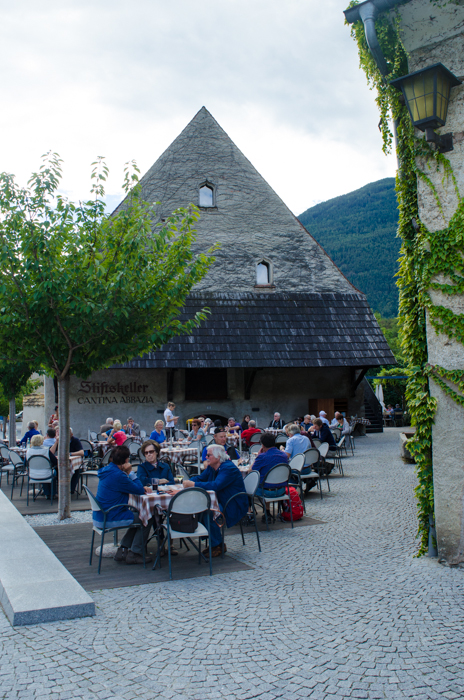 Visitors can take a tour of the monastery, try products from the monastery’s own estates in the monastery cellar, including the Novacella wines, brandies, apple juice, elderflower cordial and the Novacella herbal infusions. The Abbazia also offers guided tours of the wine estate followed by a tasting of their wines. Reservations for the latter are required.
Visitors can take a tour of the monastery, try products from the monastery’s own estates in the monastery cellar, including the Novacella wines, brandies, apple juice, elderflower cordial and the Novacella herbal infusions. The Abbazia also offers guided tours of the wine estate followed by a tasting of their wines. Reservations for the latter are required.
A few wines I recommend you check out:
Praepositus Kerner
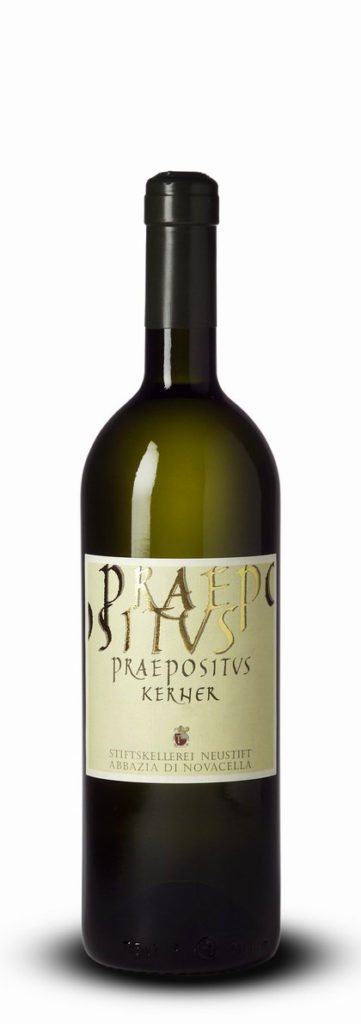
The Praepositus (translation: warden/provost/prior of an abbey) line represents the very best expression of Abbazia’s vineyards. They are not single-vineyard wines, but selections of the best fruit from the best sites.
The Kerner grape is white grape variety, with a very intense aroma. Originally developed in Germany, It was bred in 1929 by August Herold by crossing the red grape Trollinger, which is known in Italy as Schiava or Vernatsch, with the white grape Riesling. The name Kerner was chosen as a tribute to a poet and physician, Justinus Kerner, who wrote songs and poetry on wine. The wines made from this varietal are wonderfully rich in flavor, with bright floral aromas and a full, fruity palate.
The 2015 Praepositus Kerner was awarded 95 points by Wine Enthusiast, and 92 points by James Suckling. Wine Enthusiast said “You’ll need to swirl the glass a few times to release the enticing scents of yellow stone fruit, Alpine herb and an intriguing smoky note. The savory vibrant palate is more expressive, delivering layers of crunchy green apple, zesty tangerine and juicy yellow peach set against crisp acidity. A flinty mineral note graces the lingering finish, lending even more depth.”
Gewurztraminer
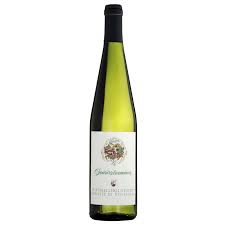 Gewurztraminer, or “spicy” Traminer, originated in Sudtirol. Traminer is one of the oldest grapes in the world, and recent studies have demonstrated that it is the ancestor of some of the oldest grape varieties in the world, including Cabernet Sauvignon, Riesling, Pinot Bianco, Grigio and Noir. An intensely aromatic and elegant wine, its pink to reddish grapes are naturally sweet, and produce a white wine that is usually off-dry, with a strong scent of lychee.
Gewurztraminer, or “spicy” Traminer, originated in Sudtirol. Traminer is one of the oldest grapes in the world, and recent studies have demonstrated that it is the ancestor of some of the oldest grape varieties in the world, including Cabernet Sauvignon, Riesling, Pinot Bianco, Grigio and Noir. An intensely aromatic and elegant wine, its pink to reddish grapes are naturally sweet, and produce a white wine that is usually off-dry, with a strong scent of lychee.
A delicate floral aroma with a whiff of tropical fruits. Full-bodied and lush, but dry with a crisp acidity.
Santa Magdalener
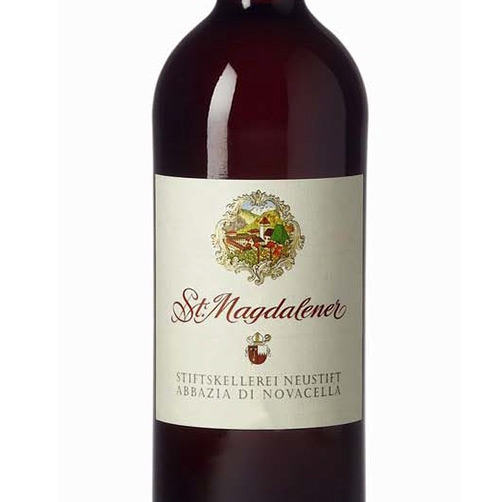 Santa Magdalener wines are a red wine produced from the native Schiava grapes, also known as Vernatsch. These wines are blends, containing up to 15% of other varieties of grapes, most commonly Lagrein, another native varietal, as well as Pinot Noir. Typically, as with the Abbazia di Novacella offering, these wines include at least 5% Lagrein.
Santa Magdalener wines are a red wine produced from the native Schiava grapes, also known as Vernatsch. These wines are blends, containing up to 15% of other varieties of grapes, most commonly Lagrein, another native varietal, as well as Pinot Noir. Typically, as with the Abbazia di Novacella offering, these wines include at least 5% Lagrein.
A bright ruby red, with hints of floral and cherry fruit on the nose. It is crisp, lively, and full of cherry flavor, with just a bit of acidity and tannin to balance.
Praepositus Pinot Nero Riserva
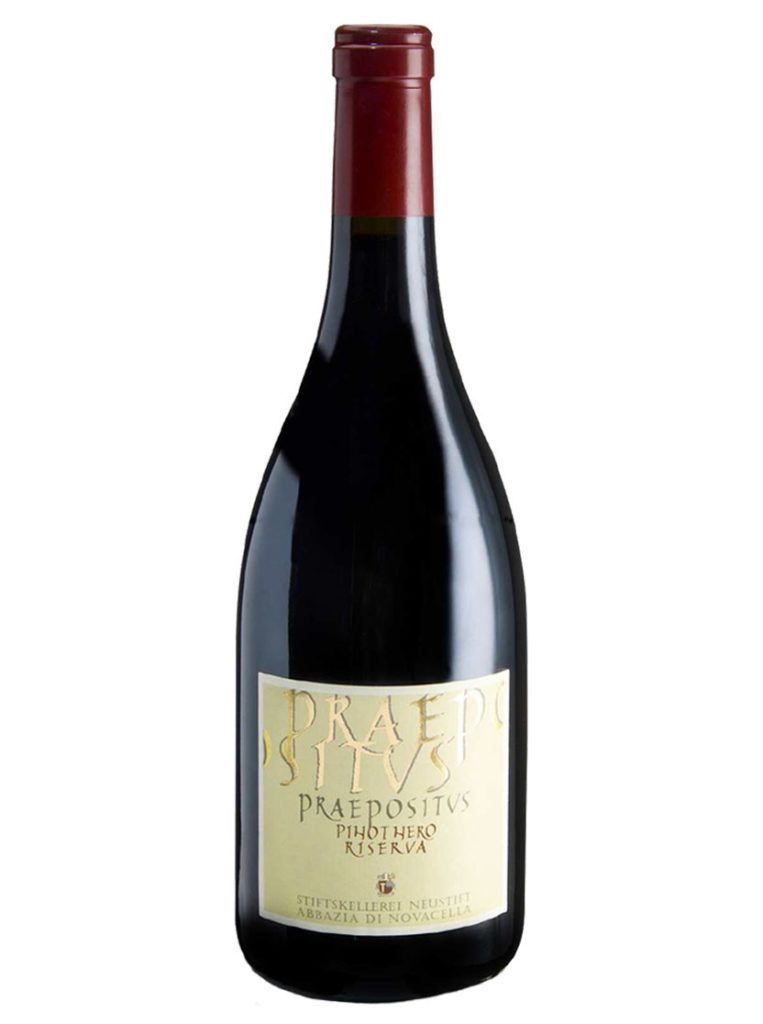
One of the Abbazia’s flagship wines, this 100% Blauburgunder (Pinot Nero/Pinot Noir) hails from gravelly marine soils at elevation of 350 meters. Fermentation takes place in stainless steel for 20 days, followed by malolactic fermentation and maturation over 18 months in French barriques.
A stylish and sophisticated Pinot Noir, rather than full-bodied and muscular. Medium ruby with a fresh, fruity nose, aromatic, supple and luscious with hints of red currants, smooth tannins and a discreet whiff of spicy oak.
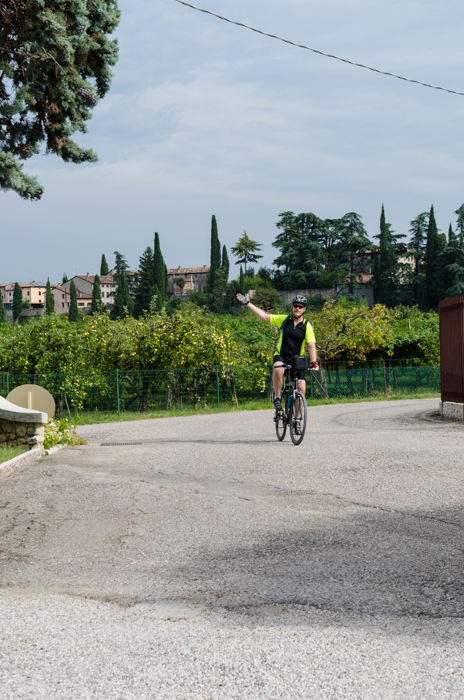 Dear lovers of Italy and biking enthusiasts!
Dear lovers of Italy and biking enthusiasts!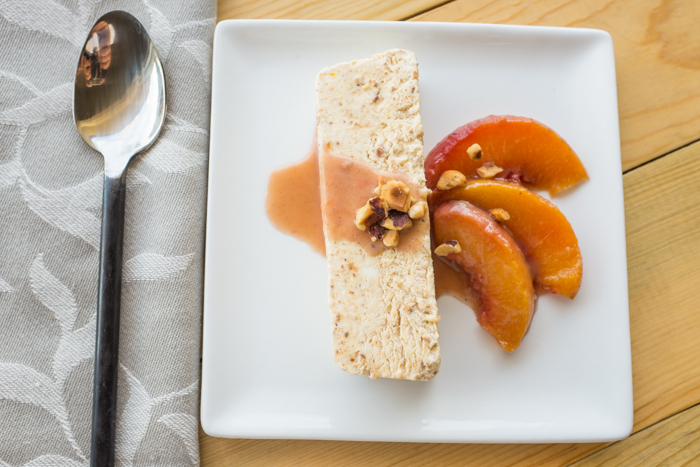 One of the many benefits of an active holiday, like our
One of the many benefits of an active holiday, like our 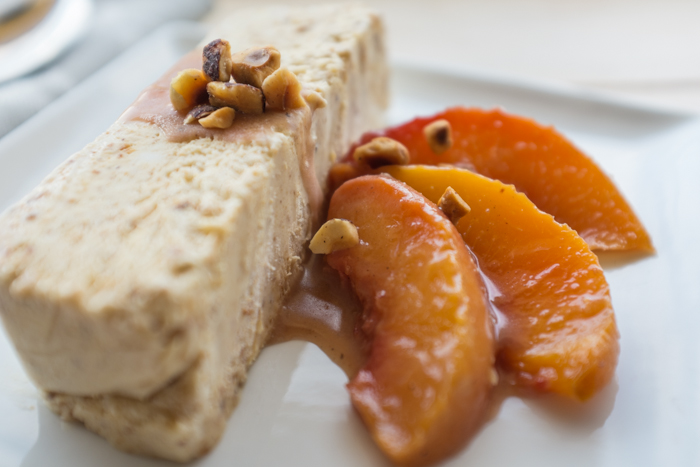 This week I am featuring a couple of local products from Northern Italy in an easy summer dessert, Semifreddo di Nocciole, a Hazelnut Semifreddo. Semifreddo, “part frozen” is a frozen dessert found in restaurants across Italy. As it contains more sugar and air than ice cream, it doesn’t freeze as hard, and can be cut into slices straight out of the freezer. And you don’t need an ice cream maker or any other special equipment to make it – you just mix the ingredients, place into a loaf pan, cover with plastic wrap and freeze for a few hours.
This week I am featuring a couple of local products from Northern Italy in an easy summer dessert, Semifreddo di Nocciole, a Hazelnut Semifreddo. Semifreddo, “part frozen” is a frozen dessert found in restaurants across Italy. As it contains more sugar and air than ice cream, it doesn’t freeze as hard, and can be cut into slices straight out of the freezer. And you don’t need an ice cream maker or any other special equipment to make it – you just mix the ingredients, place into a loaf pan, cover with plastic wrap and freeze for a few hours.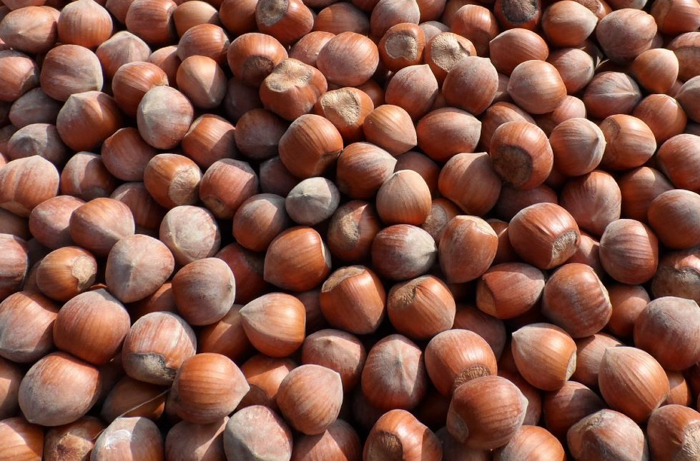 The center of hazelnut production in Italy is the
The center of hazelnut production in Italy is the 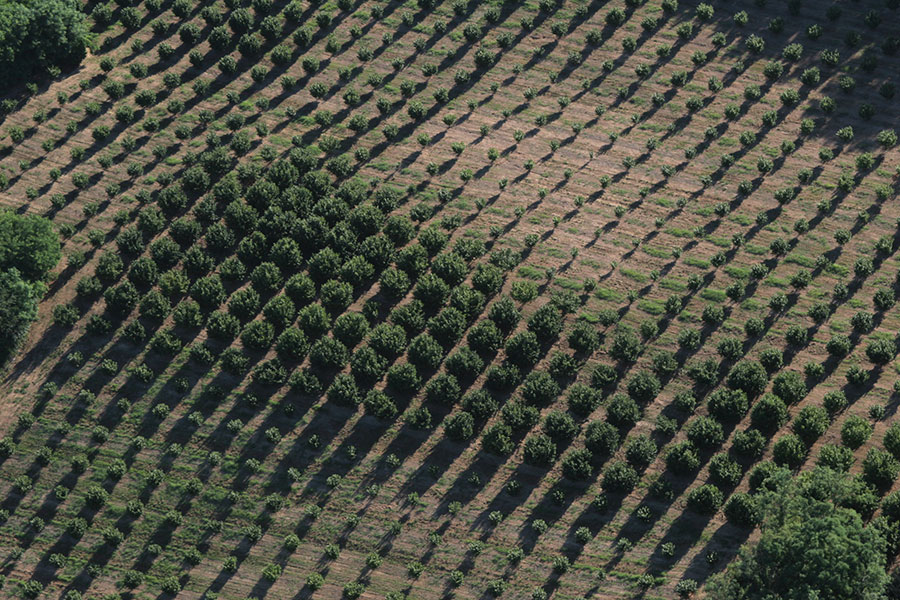 Today in the Langhe area visitors can spot the hazelnuts orchards among the vineyards – the trees are neatly spaced 5 meters apart to allow for a self-propelled picking machine. Harvest is in August and September, when the nuts are completely ripe and fall from the trees. After harvest, the product is dried, either in the sun or by air dryers, and then stored in thin layers. Cortemilia, a small town in the province of Cuneo, celebrates the Sagra della Nocciola IGP Piemonte – the Festival of the Piemonte Hazelnuts – every August for over 60 years now.
Today in the Langhe area visitors can spot the hazelnuts orchards among the vineyards – the trees are neatly spaced 5 meters apart to allow for a self-propelled picking machine. Harvest is in August and September, when the nuts are completely ripe and fall from the trees. After harvest, the product is dried, either in the sun or by air dryers, and then stored in thin layers. Cortemilia, a small town in the province of Cuneo, celebrates the Sagra della Nocciola IGP Piemonte – the Festival of the Piemonte Hazelnuts – every August for over 60 years now.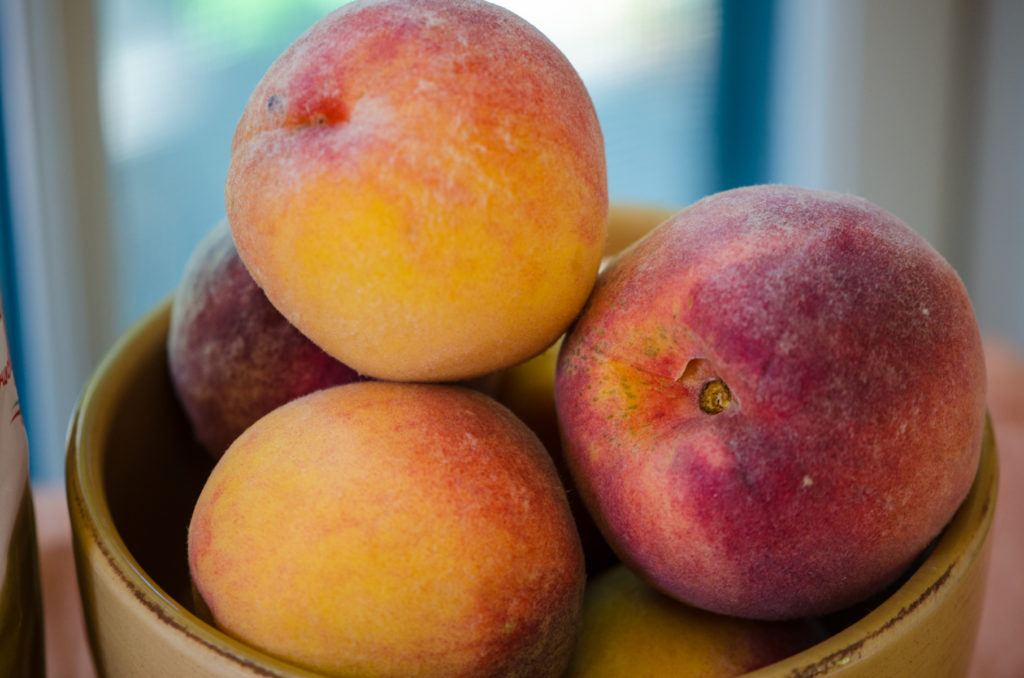 I accompanied my version of this dessert with a peach sauce. During the summer months on
I accompanied my version of this dessert with a peach sauce. During the summer months on 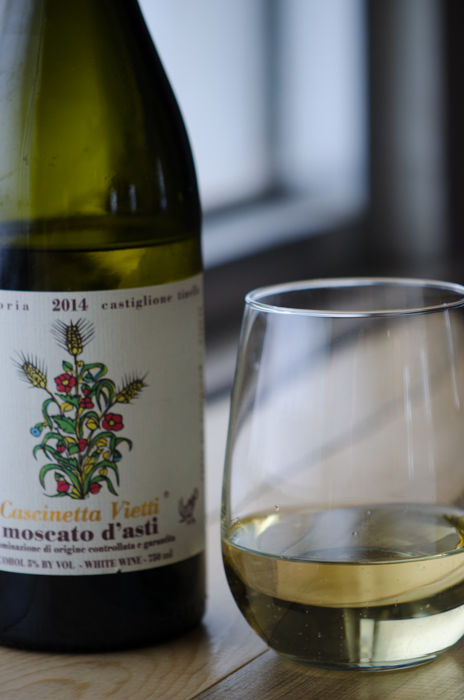 Serve with a dessert wine from Piedmonte, like the regional frizzante white wine of Moscato d’Asti
Serve with a dessert wine from Piedmonte, like the regional frizzante white wine of Moscato d’Asti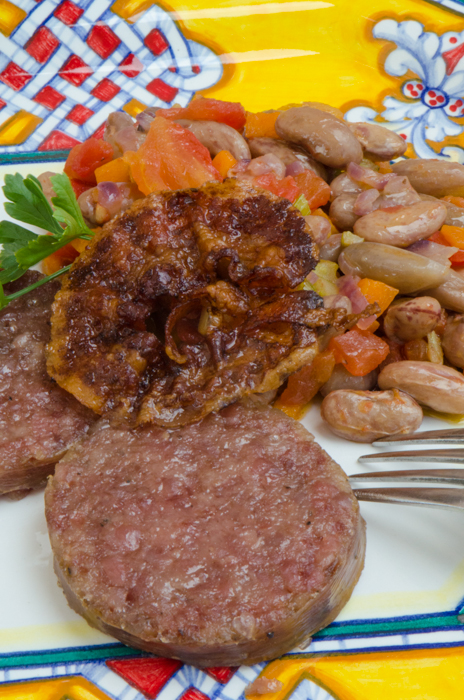 Exploring the local cuisine of the regions we visit on our walking tours and cycling tours in Italy is an important part of creating an authentic Italy experience. No tourist menus, no spaghetti and meat balls. Italians pride themselves on their food knowledge, and part of this is knowing where the best food comes from – what towns produce the best white asparagus, makes the best salumi, or tastiest cheese.
Exploring the local cuisine of the regions we visit on our walking tours and cycling tours in Italy is an important part of creating an authentic Italy experience. No tourist menus, no spaghetti and meat balls. Italians pride themselves on their food knowledge, and part of this is knowing where the best food comes from – what towns produce the best white asparagus, makes the best salumi, or tastiest cheese.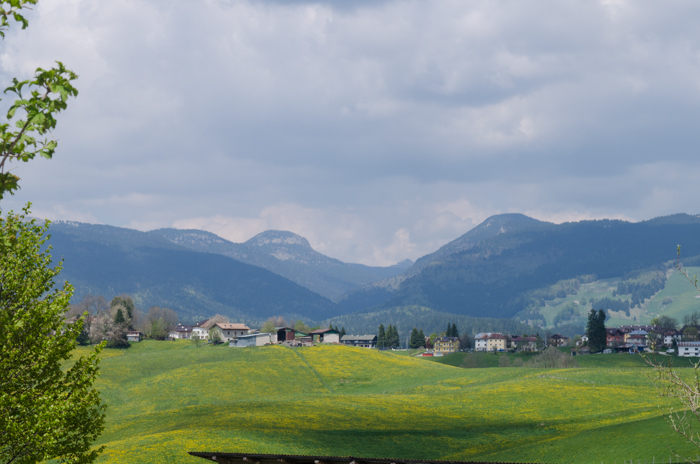 Italian law, as well as EU law, supports this identification of food products (and wines) with a place of origin. This is something we don’t have in the US, and in fact ignore as we label cheese as “Asiago” – which is a location in Italy, a lovely mountain plateau in northern Veneto region, and only cheese made there can legally use the name. A great place to explore on foot, enjoying the amazing view of the Veneto plains as we follow the “Giro di Malghe”, a walk through the small farms that produce the authentic Asiago cheese.
Italian law, as well as EU law, supports this identification of food products (and wines) with a place of origin. This is something we don’t have in the US, and in fact ignore as we label cheese as “Asiago” – which is a location in Italy, a lovely mountain plateau in northern Veneto region, and only cheese made there can legally use the name. A great place to explore on foot, enjoying the amazing view of the Veneto plains as we follow the “Giro di Malghe”, a walk through the small farms that produce the authentic Asiago cheese.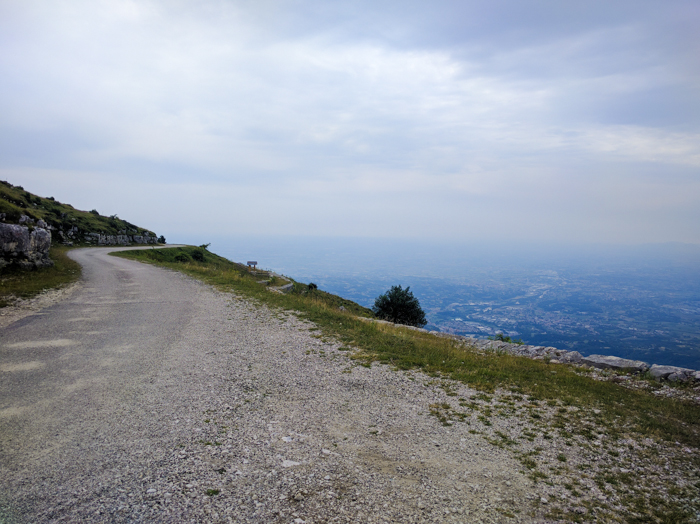
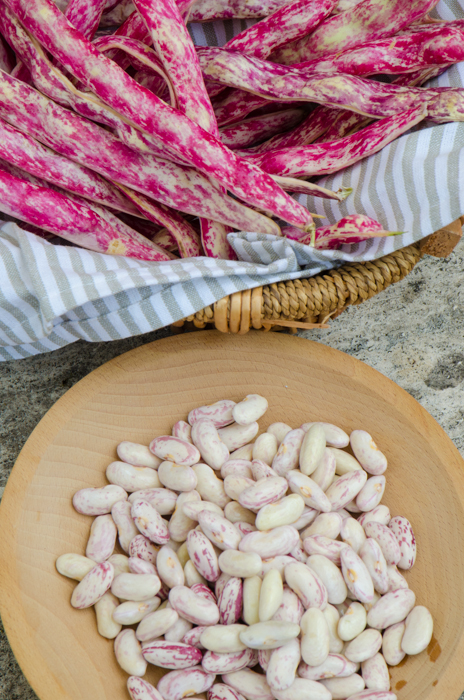 The valley of Astico lies in the heart of the Vicenza province, sheltered by the mountains that separate it from Trentino. In this environment, renowned for its mineral water, grow the beans of Posina, Arsiero and Laghi. Two varieties, Scalda and Fasòla, are cultivated both in the valley and on the slopes. Between the World Wars, Posina beans were sold throughout the country, but today only small amounts are produced. These beans require fresh, well-drained soil, with little clay so that they don’t become tough. The Scalda variety is particularly sweet and highly nutritious, with a pleasant, floury texture and a thin pod that withstands heat and keeps it from coming apart in soups. The Fasòla can grow to up to four meters in height and has a vinous scarlet-colored seed with black speckling that is double in size. It has a denser consistency, is best served raw and has a flavor vaguely reminiscent of the chestnut. Both varieties are perfect for a classic dish of this region, a bean soup called Pasta Fagioli.
The valley of Astico lies in the heart of the Vicenza province, sheltered by the mountains that separate it from Trentino. In this environment, renowned for its mineral water, grow the beans of Posina, Arsiero and Laghi. Two varieties, Scalda and Fasòla, are cultivated both in the valley and on the slopes. Between the World Wars, Posina beans were sold throughout the country, but today only small amounts are produced. These beans require fresh, well-drained soil, with little clay so that they don’t become tough. The Scalda variety is particularly sweet and highly nutritious, with a pleasant, floury texture and a thin pod that withstands heat and keeps it from coming apart in soups. The Fasòla can grow to up to four meters in height and has a vinous scarlet-colored seed with black speckling that is double in size. It has a denser consistency, is best served raw and has a flavor vaguely reminiscent of the chestnut. Both varieties are perfect for a classic dish of this region, a bean soup called Pasta Fagioli.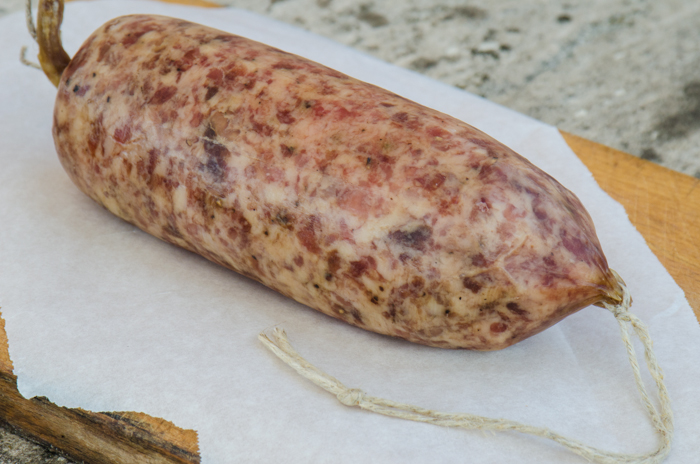 The cotechino featured in the recipe has local ties too – a large salumi found in the northern regions of Emilia Romagna, Lombardy, and the Veneto, and is typically featured in the classic dish Bollito Misto. The name originated from the presence of pork skin (cotica) in varying proportions in the salumi. At one time it was as high as 50%, but today cotechino contains no more than 30%. It is derived from pork parts around the neck and head of the animal, adding a substantial place at the base of the head. It is seasoned with salt, cloves, pepper, and cinnamon. My local butcher described to me how to cook it, submerged in simmering water for a minimum of 2 1/2 hours – not a minute less!
The cotechino featured in the recipe has local ties too – a large salumi found in the northern regions of Emilia Romagna, Lombardy, and the Veneto, and is typically featured in the classic dish Bollito Misto. The name originated from the presence of pork skin (cotica) in varying proportions in the salumi. At one time it was as high as 50%, but today cotechino contains no more than 30%. It is derived from pork parts around the neck and head of the animal, adding a substantial place at the base of the head. It is seasoned with salt, cloves, pepper, and cinnamon. My local butcher described to me how to cook it, submerged in simmering water for a minimum of 2 1/2 hours – not a minute less!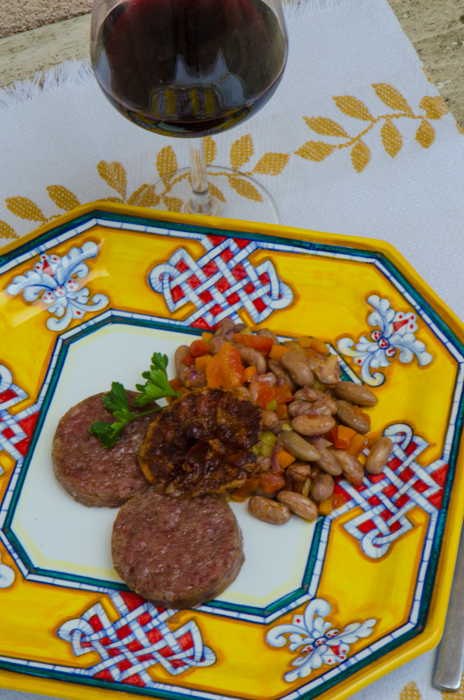 I always pair my dishes with a wine from the same locale – for this dish I recommend a wine from the Colli Berici wine zone in the Veneto, Piovene Porte Godi’s Polveriera, a Bordeaux blend made with estate grown grapes.
I always pair my dishes with a wine from the same locale – for this dish I recommend a wine from the Colli Berici wine zone in the Veneto, Piovene Porte Godi’s Polveriera, a Bordeaux blend made with estate grown grapes.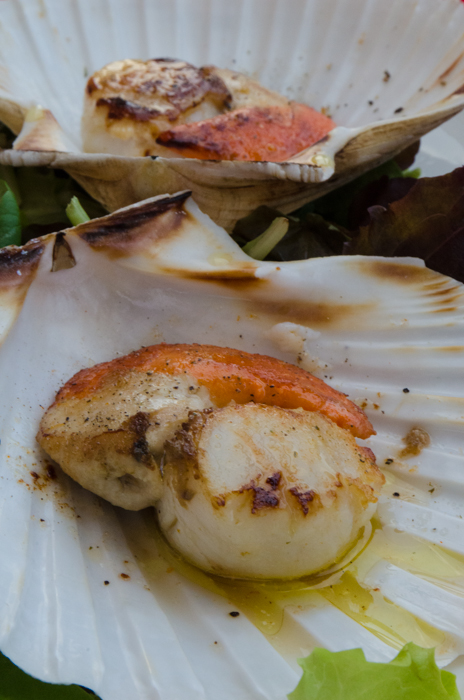 On our
On our 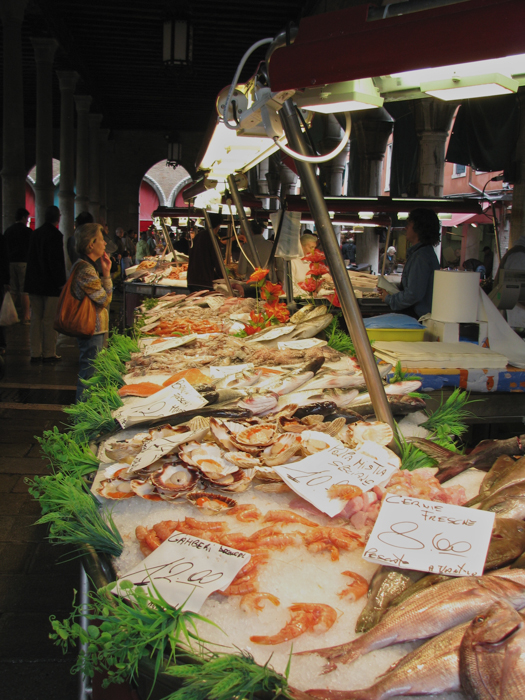 The Rialto was settled by the ninth century, a small area known as the Rivoaltus, or “high bank”, around a river that eventually became known as the Grand Canal. The Rialto became an important district in 1097, when the market moved there, and in the following century a boat bridge was set up across the Grand Canal providing access to it. This was eventually replaced by the Rialto Bridge.
The Rialto was settled by the ninth century, a small area known as the Rivoaltus, or “high bank”, around a river that eventually became known as the Grand Canal. The Rialto became an important district in 1097, when the market moved there, and in the following century a boat bridge was set up across the Grand Canal providing access to it. This was eventually replaced by the Rialto Bridge.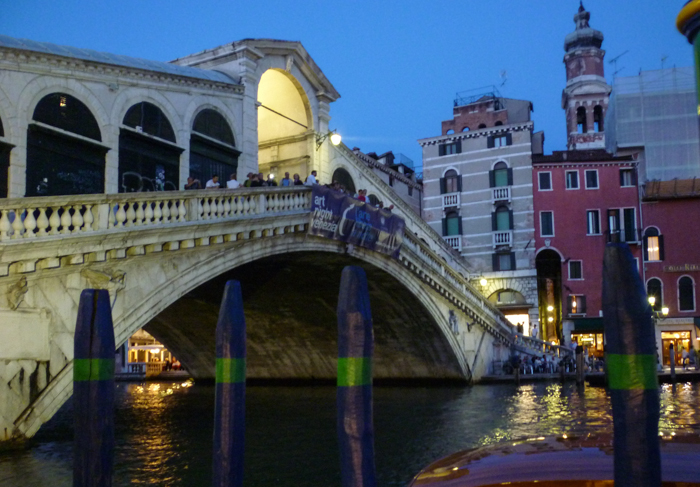
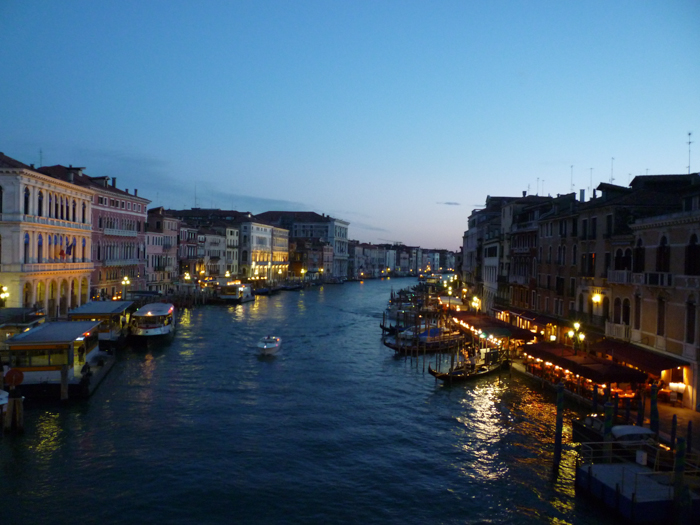 The market expanded into both a retail and as a wholesale market. Today you’ll find shops selling luxury goods, push carts with jewelry, leather goods, tourist knickknacks. Heading away from the bridge are produce stands, butchers, and cheese shops. Further in is the Pescheria (fish market), teeming with the fruits of the Adriatic.
The market expanded into both a retail and as a wholesale market. Today you’ll find shops selling luxury goods, push carts with jewelry, leather goods, tourist knickknacks. Heading away from the bridge are produce stands, butchers, and cheese shops. Further in is the Pescheria (fish market), teeming with the fruits of the Adriatic.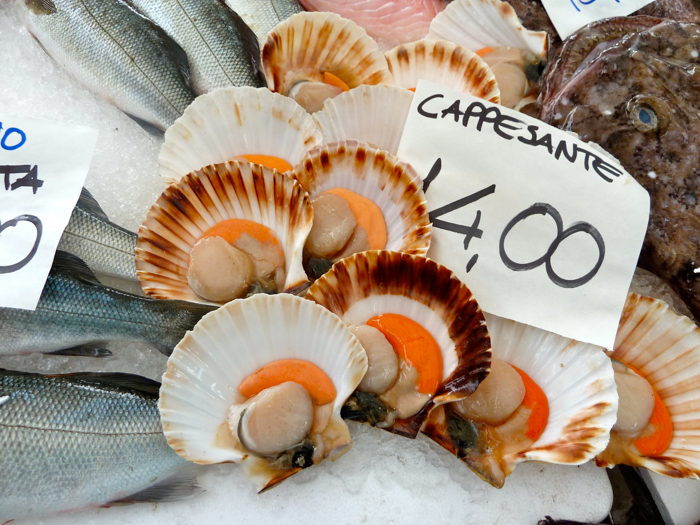 Scallops are one of my favorite items to buy at the Peschiera here in the Veneto. Here in Italy, you can buy the whole scallop intact in the shell, rather than just the adductor muscle we find in the US. Whole scallops are a great treat, offering two complementary flavors and textures in one shell: the meat, the adductor muscle we call a “scallop”, which is firm and white, and the “coral”, which is soft and often brightly colored reddish-orange. Whole scallops are a snap to prepare, delicious, and visually dramatic served in its shell.
Scallops are one of my favorite items to buy at the Peschiera here in the Veneto. Here in Italy, you can buy the whole scallop intact in the shell, rather than just the adductor muscle we find in the US. Whole scallops are a great treat, offering two complementary flavors and textures in one shell: the meat, the adductor muscle we call a “scallop”, which is firm and white, and the “coral”, which is soft and often brightly colored reddish-orange. Whole scallops are a snap to prepare, delicious, and visually dramatic served in its shell.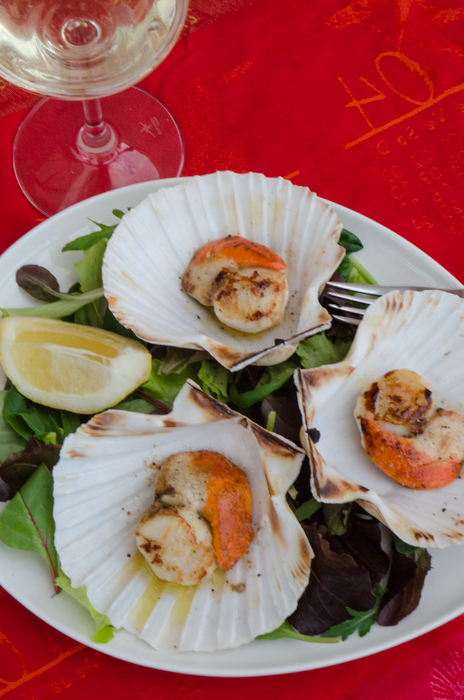 In Venice, whole scallops are served as an antipasti, or as tasty fish based secondi, or second course. The scallop meat finds its way into primi courses accompanied by gnocchi, or in a risotto. This recipe, a hot antipasti, is typically Venetian but popular along the entire North Adriatic coast.
In Venice, whole scallops are served as an antipasti, or as tasty fish based secondi, or second course. The scallop meat finds its way into primi courses accompanied by gnocchi, or in a risotto. This recipe, a hot antipasti, is typically Venetian but popular along the entire North Adriatic coast. Our last stop on our upcoming
Our last stop on our upcoming  Later years saw the Abbey almost destroyed. In World War I Novacella was occupied by soldiers. Apart from the small funeral bell and the fire bell, all other bells were taken away to make weapons and were only replaced in 1922. The Second World War was even more disastrous for the Abbazia. The German Armed Forces used the monastery buildings to store armaments and set up a printing works. As a result, Novacella became the target of an Allied bombing raid on 23rd March 1945 which damaged the northern side of the collegiate church, the sacristy, the tower and the Chapel of Grace. The damage was finally repaired by restoration work in 1982.
Later years saw the Abbey almost destroyed. In World War I Novacella was occupied by soldiers. Apart from the small funeral bell and the fire bell, all other bells were taken away to make weapons and were only replaced in 1922. The Second World War was even more disastrous for the Abbazia. The German Armed Forces used the monastery buildings to store armaments and set up a printing works. As a result, Novacella became the target of an Allied bombing raid on 23rd March 1945 which damaged the northern side of the collegiate church, the sacristy, the tower and the Chapel of Grace. The damage was finally repaired by restoration work in 1982. The monastery still maintains itself economically through the production and sales of agricultural products such as culinary herbs and fruit. But its most renowned product are the Abbazia di Novacella wines. The Abbazia now boasts an international reputation as an award-winning winery. It is home to a small wine making school, and in 2009, Italy’s Gambero Rosso named Celestino Lucin, the abbey’s enologist, Winemaker of the Year.
The monastery still maintains itself economically through the production and sales of agricultural products such as culinary herbs and fruit. But its most renowned product are the Abbazia di Novacella wines. The Abbazia now boasts an international reputation as an award-winning winery. It is home to a small wine making school, and in 2009, Italy’s Gambero Rosso named Celestino Lucin, the abbey’s enologist, Winemaker of the Year. Visitors can take a tour of the monastery, try products from the monastery’s own estates in the monastery cellar, including the Novacella wines, brandies, apple juice, elderflower cordial and the Novacella herbal infusions. The Abbazia also offers guided tours of the wine estate followed by a tasting of their wines. Reservations for the latter are required.
Visitors can take a tour of the monastery, try products from the monastery’s own estates in the monastery cellar, including the Novacella wines, brandies, apple juice, elderflower cordial and the Novacella herbal infusions. The Abbazia also offers guided tours of the wine estate followed by a tasting of their wines. Reservations for the latter are required.
 Gewurztraminer, or “spicy” Traminer, originated in Sudtirol. Traminer is one of the oldest grapes in the world, and recent studies have demonstrated that it is the ancestor of some of the oldest grape varieties in the world, including Cabernet Sauvignon, Riesling, Pinot Bianco, Grigio and Noir. An intensely aromatic and elegant wine, its pink to reddish grapes are naturally sweet, and produce a white wine that is usually off-dry, with a strong scent of lychee.
Gewurztraminer, or “spicy” Traminer, originated in Sudtirol. Traminer is one of the oldest grapes in the world, and recent studies have demonstrated that it is the ancestor of some of the oldest grape varieties in the world, including Cabernet Sauvignon, Riesling, Pinot Bianco, Grigio and Noir. An intensely aromatic and elegant wine, its pink to reddish grapes are naturally sweet, and produce a white wine that is usually off-dry, with a strong scent of lychee. Santa Magdalener wines are a red wine produced from the native Schiava grapes, also known as Vernatsch. These wines are blends, containing up to 15% of other varieties of grapes, most commonly Lagrein, another native varietal, as well as Pinot Noir. Typically, as with the Abbazia di Novacella offering, these wines include at least 5% Lagrein.
Santa Magdalener wines are a red wine produced from the native Schiava grapes, also known as Vernatsch. These wines are blends, containing up to 15% of other varieties of grapes, most commonly Lagrein, another native varietal, as well as Pinot Noir. Typically, as with the Abbazia di Novacella offering, these wines include at least 5% Lagrein.
